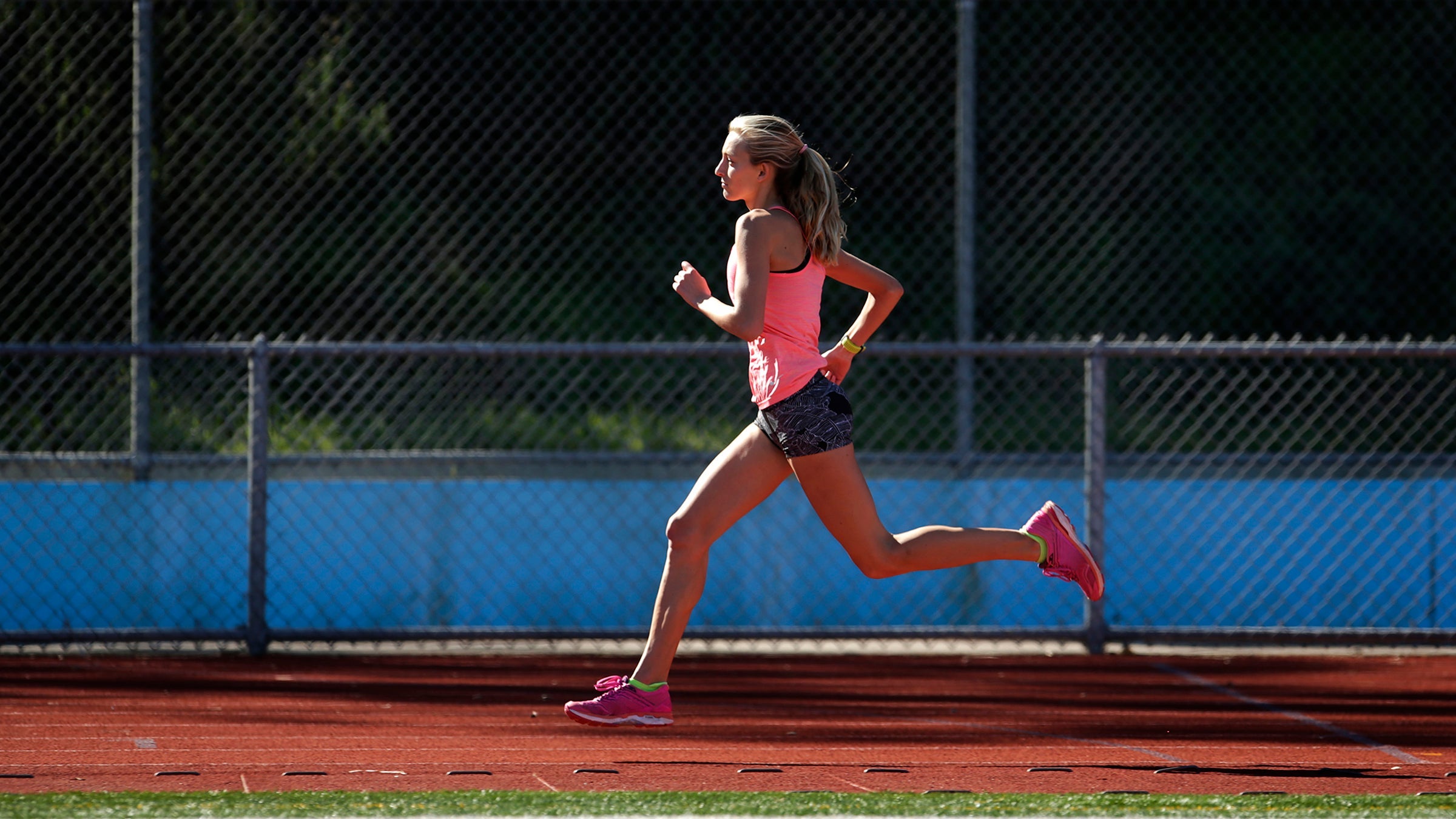Fifty-two years ago, an Air Force doctor named Kenneth Cooper got to wondering how to assess the fitness of hundreds of thousands of Air Force personnel without resorting to the cumbersome (and expensive) method of putting them all on exercise-physiology-lab treadmills and measuring their VO2maxes, one at a time.
Could it be possible, he asked himself, to dispense with the fancy lab equipment and just let them run, seeing how far they got in a time frame designed to put them close to their personal VO2maxes.
Cooper’s method, published in 1968 in the Journal of the American Medical Association and later in his best-selling book Aerobics, helped launch a fitness revolution that was instrumental in creating the running boom of the 1970s, which spawned much of today’s running culture.
It was all based on a simple self-test, tailor-made for today’s GPS watches or apps: How far can you run in 12 minutes?
Obviously, there are a few caveats: running downhill or with a big tailwind is cheating. Nor should you expect to get meaningful results on an uncomfortably hot or cold day, when too much of your energy goes into fighting the weather.
But beyond that, the idea is simplicity itself: find a flat, fast course (or a track), warm up, start your watch, and run.
If you’re on the road, using a GPS, simply watch your elapsed time, and, when it reaches 12 minutes stop and record the total distance covered.
If you’re on a track, count laps, and when the timer goes off, mark the spot where you finished. GPS devices are notoriously inaccurate on tracks, so you’ll then want to measure your final partial lap more directly. One way is by finding the 100m marks and counting how many walking paces you take over 100 meters. Then, pace off the distance you ran beyond the last marked point on the track, and use that to estimate how far beyond it you went. Hyper-precision isn’t necessary. Over the course of 12 minutes, even a measurement error of 20 or 30 meters isn’t a big deal.

Converting Results to VO2max
In his 1968 study, Cooper tested his idea by having 115 U.S. Air Force officers and enlisted personnel run his 12-minute test, comparing it to their results on conventional VO2max treadmill tests.
He found an 89.7 percent correlation between the results of their 12-minute tests and their lab results: not perfect but very good, and not far off of the accuracy of smartwatch VO2max estimations.
He then converted that to a formula that could be used to predict VO2max from 12-minute time-trial results:
VO2max = (35.97 x miles) – 11.29
Or, in meters:
VO2max = (0.02235 x meters) – 11.29
For example, if in 12 minutes you cover 2 miles (3,219 meters) your probable VO2max is 60.6.
Or, if you prefer, the Cooper Institute, in Dallas, Texas, has a link that will do the calculation for you and rate you according to the overall average.
Not that you should rely too strongly on these numbers as indicators of VO2max. Even an 89.7 percent correlation isn’t perfect, and a lot of other factors, including running economy, mileage base, and — most important of all, ability to pace yourself — go into the overall result.
Also, this test is based on performance in a solo time trial, not a race. Some runners are inherently good time trialers and will score high. Other, equally good racers will find it hard to motivate themselves for a time trial that doesn’t duplicate the racing experience, and will score lower.
You may also find that your estimated VO2max differs from what you calculate from race performances as your “VDOT,” using the famous tables in Jack Daniels book, Daniels Running Formula — or his online calculator. That’s because Daniels’ VDOT isn’t really VO2max, even though the number is similar. Daniels himself calls it a “pseudo” VO2max, noting that it’s based on other factors than purely VO2max. Or, as someone put it on letsrun.com a few years ago: “VO2max is a physiological measurement, essentially based on your maximal oxygen uptake and your body weight. VDOT is a measure of how fast your are… Stop acting like the two should magically match up…”
A Basis For Finding Workout Paces
But ultimately, the exact numerical score isn’t the point. The principle purpose of this test, says French exercise physiologist Veronique Billat in her soon-to-be-released book The Art and Science of Marathon Running, is to assess what she calls maximal aerobic speed(MAS).
Also known as vVO2max, MAS is the speed at which you are running when you first hit VO2max, and is increasingly believed to be an important pace for interval training. Billat herself has developed several such protocols, including a workout in which you alternate between 30 seconds at MAS and 30 seconds at recovery pace, and another in which you do three-minute repeats at vVO2max, on three-minute recoveries.
Since your 12-minute test is run at about VO2max effort, that makes it a good way to estimate your MAS without need for a lab test: Simply divide 12 minutes by the distance covered and voila, there it is. In our simple example above, the person who covered exactly 2 miles would be at MAS at a 6:00/mile pace, meaning that 90-second laps might be a good pace for intervals designed to boost aerobic performance.
There are, of course, other ways of estimating MAS. Billat herself has come up with two others: A six-minute time trial and a more complex fartlek she calls the RABIT test in which you record your pace while varying your perceived effort from easy to sprint according to a 28-minute formula, then submit your results to her website. Or instead of doing a 12-minute time trial, you could do 2 miles, 3000m, or whatever other distance would take you about 12 minutes.
But the fun of Cooper’s 52-year-old test is, simply, that it’s easy and fun. This test from the dawn of the running boom, is now new and different from anything we normally do, and as we continue to chafe against COVID-19 confinement, anything new and different is valuable, in and of itself.
It can also be used as a benchmark against which to measure future fitness, because what matters isn’t so much what exactly it calculates for your VO2max, as how it progresses with time.
A Unique Competitive Challenge
It’s also a test that easily lends itself to online competition, especially if you age and gender grade the results.
The World Master’s Association age-grading tables don’t have a category for a 12-minute run, but if you treat it as a 3K, you won’t be far off.
To age-adjust a runner’s 12-minute time-trial distance, therefore, all you need to do is divide it by the appropriate 3K age-grading factor from the age-graded table or an online age-grading calculator that provides it. E.g., if a 47-year-old female (age grading factor 0.8854) covers 1.86 miles, their age-adjusted distance is 1.86/0.8854, or 2.10 miles.
Gender grading is a bit more difficult, but the easiest method is to multiply women’s distances (after age-grading) by 1.10, which is the ratio of men’s and women’s 3K world records. That would give our hypothetical 47-year-old woman the age-and-gender-graded equivalent of an open-class men’s result of about 2.31 miles.
That may not be perfect, but it should be good enough to produce a fun, age-and-gender-neutral virtual competition in an event at which most people have no experience. And, as virus-imposed constraints on normal racing drag on, anything fun and different is important.


